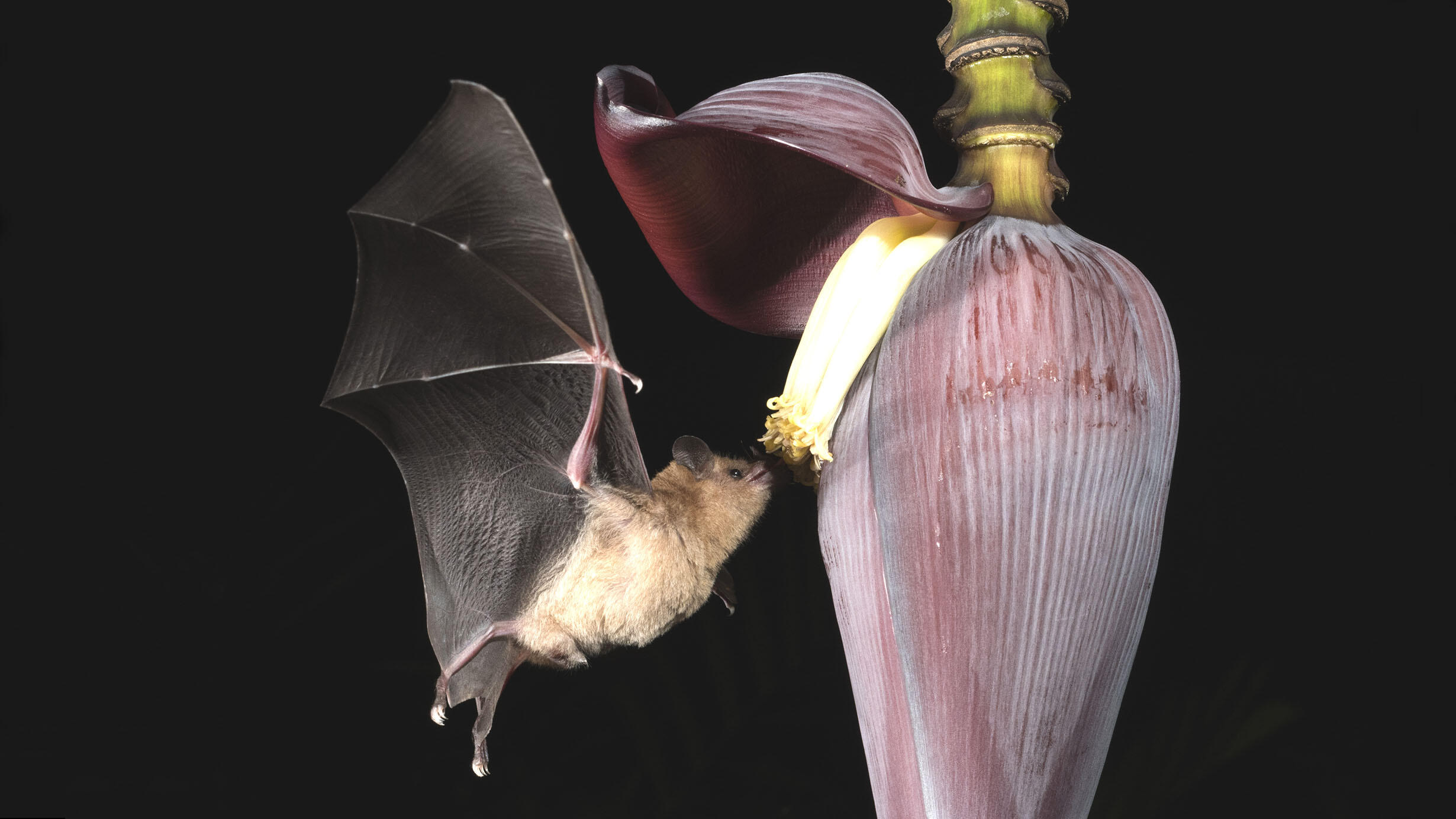 Pallas’s Long-Tongued bat (Glossophaga soricina) feeding from a banana flower in Belize.
Pallas’s Long-Tongued bat (Glossophaga soricina) feeding from a banana flower in Belize.Courtesy of Brock and Sheri Fenton
New research on bats and their gut microbes reveals that their intestinal bacteria produce extra nutrients that are lacking from their diets.
“Bats contain a diverse set of fungi, bacteria, and viruses,” said Melissa Ingala, a recent graduate of the Richard Gilder Graduate School at the Museum and current postdoctoral fellow at the Smithsonian National Museum of Natural History who is lead author of the study, published in Animal Microbiome. “Most of these can’t make us sick, and in fact play really important roles in maintaining the health of their hosts.”
Many animals host communities of microorganisms in their intestinal tracts. Known collectively as the gut microbiome, intestinal microbes have numerous important roles, including breaking down food into nutrients. Processing different types of food requires different microbial machinery, and bats have particularly diverse diets.
To understand how bats’ gut microbiomes accommodate these varied diets, Ingala and colleagues analyzed the bacteria found in fecal samples from 60 bat species from every dietary niche on Earth, including bats that ate fruit, insects, plants, nectar, other animals, and blood.
Courtesy of Ariadna Morales
The first step involved determining which bacteria were present in the samples. “Much like a barcode on a product at the grocery store, you can take a genetic scan of all of the bacteria that are in a community and compare it to a database that will tell you what those bacteria are,” said Ingala. “What it can’t tell you directly is what those bacteria are doing.”
The research team then turned to machine learning to understand the roles those bacteria play in the bat microbiome. Using an advanced algorithm, they compared the newly identified bat intestinal bacteria to a global database of other bacteria whose functions were already known.
Based on the genetic similarities between them, the team could predict the functions.
The results showed that bats with nutrient-poor diets had gut bacteria that helped fill in the gaps by producing what was missing. For example, fruit-eating bats, whose diets lack protein, were found to have bacteria that produced essential amino acids—the building blocks of proteins—which the body cannot create itself.
The team was also able to identify the bats’ dietary preferences based on the functions of their gut bacteria, highlighting the important role that gut microbiome may play in shaping bat diets.